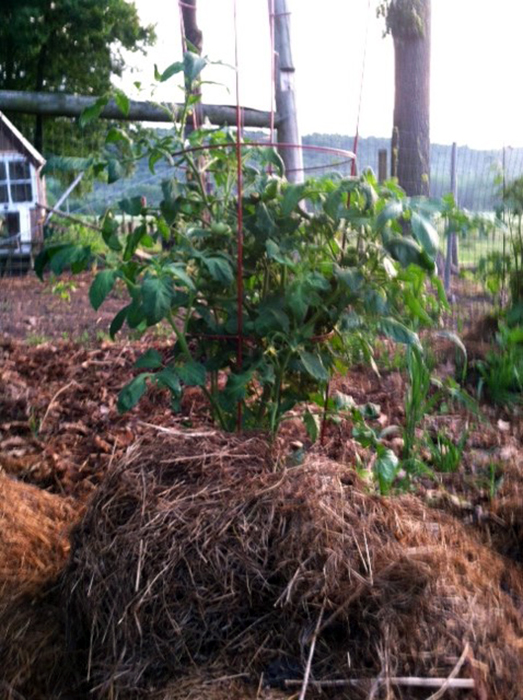

Looking for a non-permanent and inexpensive substitute for raised gardening beds? Our greenhouse experts have a solution for you. Hay bales are a great way to plant a variety of plants including tomatoes and peppers without digging or soil preparation. The bales are a great alternative if you have hard rocky soil or simply a limited amount of space. These planters can be put on concrete or asphalt and are usually removed at the end of the gardening season.
Start off by selecting the bales you would like to use for your garden and then position them where you want them. Once you start watering the bales they will become very heavy and hard to move. Next, clean the bale to ensure there are no seeds in it, and then separate the bale in half to give yourself two growing units. Then take your bales and remove straw from the bale to create 6 inch round hole that goes halfway through the bale. Place your tomato or pepper plant into the opening and plant it in soil up to the first set of leaves this will allow your plant to root better.
After you finish planting follow these sets to properly condition your bale, to help your plant flourish.
- Water the bales thoroughly and keep them wet for 3 days. This will help the bale to decompose; as it decomposes the bale will heat up. This process creates stronger roots and healthier plants.
- To speed up decomposition sprinkle the tops of the bales with 1 cup of ammonium sulfate for 3 days after the 3 days of watering.
- After 3 more days stop fertilizing but make sure to keep the bales moist.
- If weeds, oat grass, or alfalfa start to sprout in your bales remove them while they are small. While the straw is decomposing you may see mushroom sprout, there is no need to remove them but do not eat them they could be poisonous.
Growing plants this way will help protect them from frost helping you plants last the full season. At the end of the season the bale can be utilized as compost for the soil for the following year.

